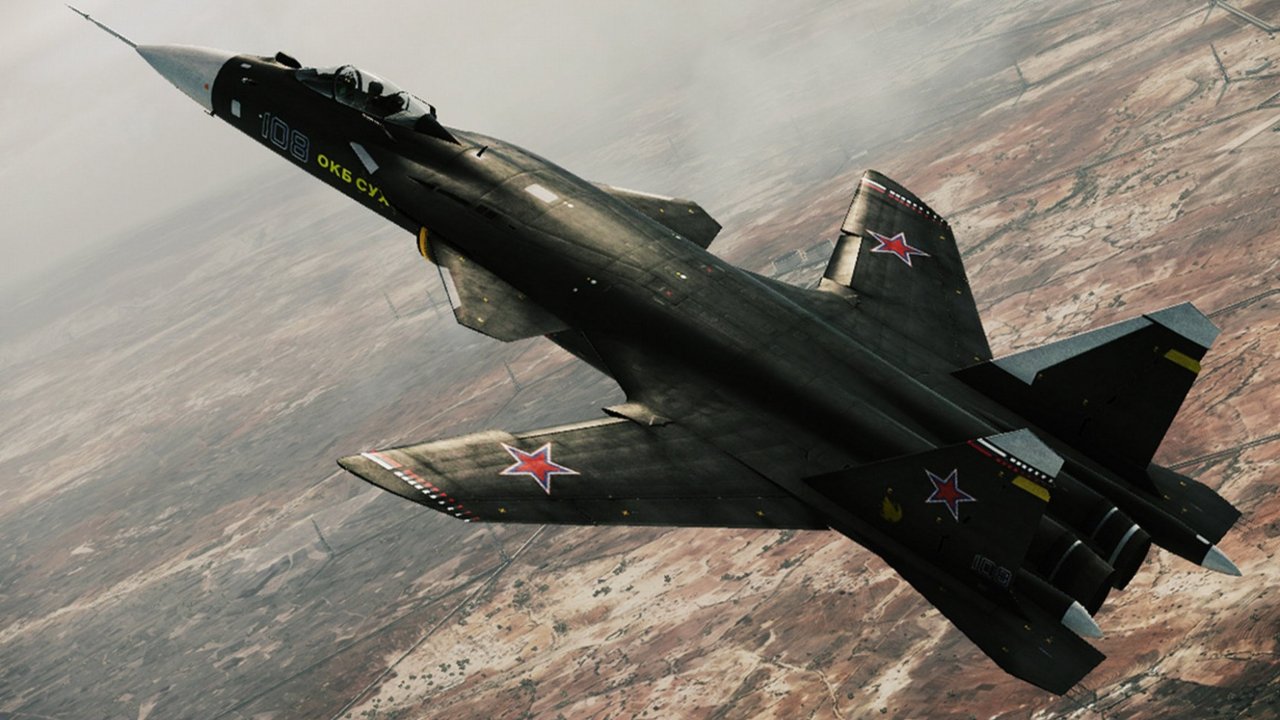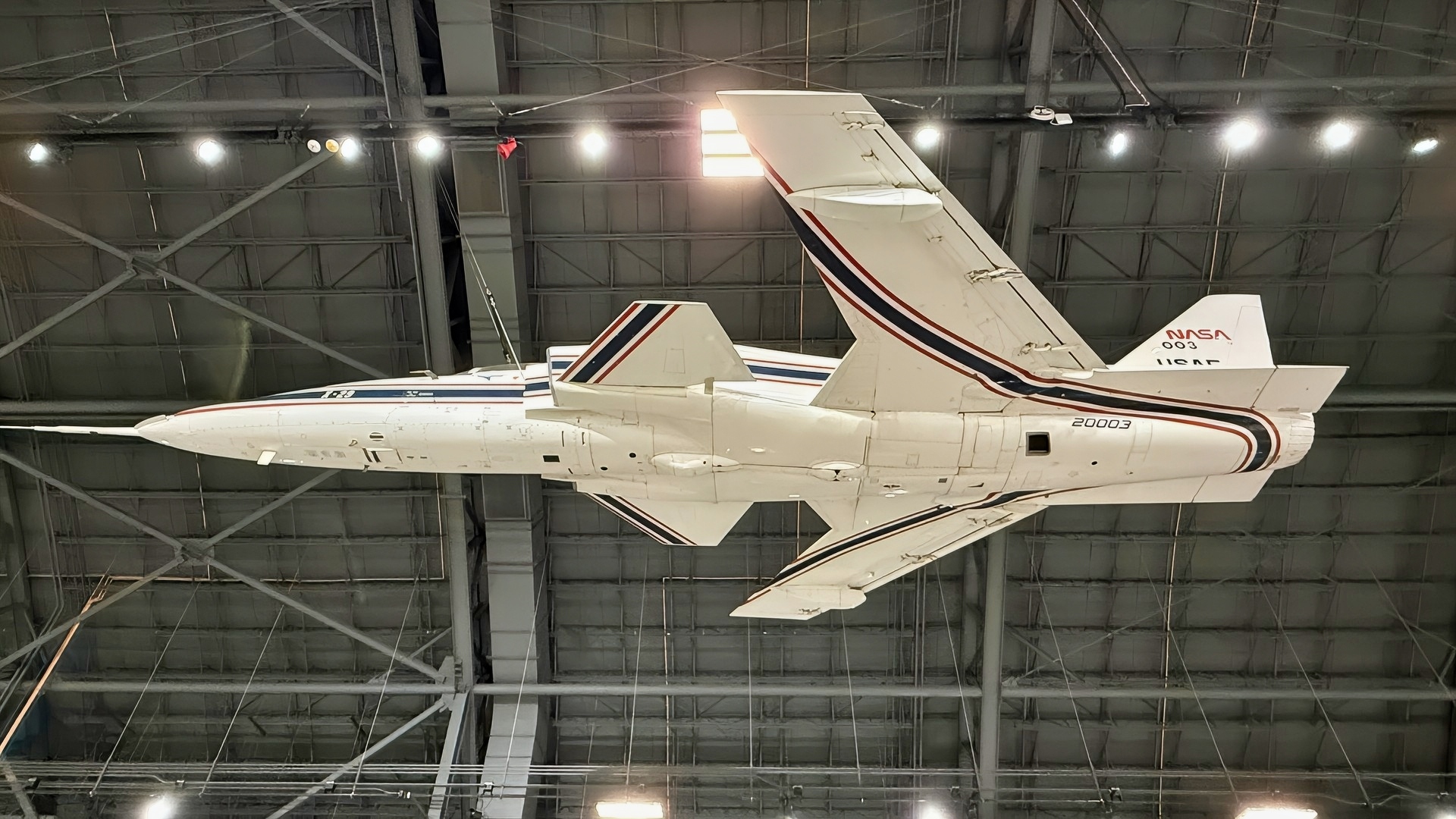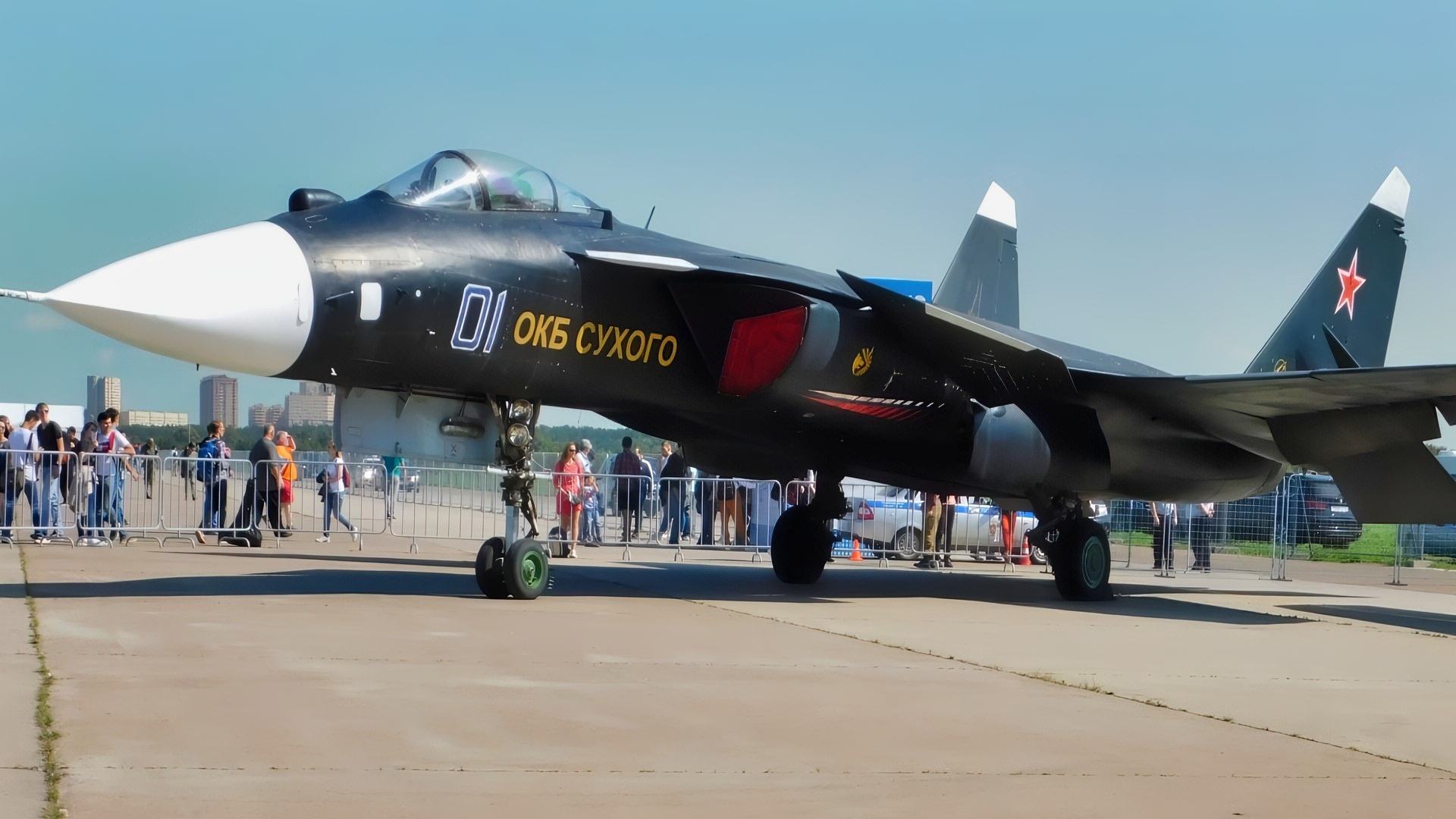Key Points and Summary – Russia’s Su-47 Berkut was a radical, forward-swept-wing fighter built as a technology demonstrator in the 1990s. The mission was simple: prove aviation concepts for new Russian fighters and weapons platforms.
-Conceived when the Soviet Union wanted a leap in agility and control, it flew in 1997, toured airshows, and then stopped at a single flying prototype.
-The reasons were simple: money, materials, engines, and mission reality—all pushing Moscow toward more conventional, stealth-friendly layouts for its next generation.
-Yet the Su-47 mattered.
-It validated heavy-use composites, refined digital flight-control laws, and contributed lessons applied to later Su-35 upgrades and the Su-57 program. Here’s the full story: why it happened, why it ended, and what Russia kept.
Su-47 Berkut: The One-Off That Changed How Russia Designs Fighters
By the early 1980s, Soviet designers were chasing a simple but ambitious goal: an agile front-line fighter that could point and turn harder than anything the West fielded.
A stream of research at TsAGI (Russia’s central aero-hydrodynamic institute) and earlier experiments—plus awareness of Germany’s World War II Ju 287 and decades of wind-tunnel work—had highlighted tantalizing benefits of forward-swept wings (FSW): strong aileron authority at high angles of attack, delayed tip stall, and better lift distribution that kept the inner wing working when you really yank the stick. In theory, the result is superb nose-pointing control in a dogfight and gentler low-speed handling for takeoffs/landings.
There was only one catch: physics.
Forward sweep shifts aerodynamic loads in a way that tries to twist the wing the “wrong” way—a problem called aeroelastic divergence. Without carefully tailored composite structures and a fast, reliable fly-by-wire (FBW) brain constantly trimming the airplane, an FSW jet risks shaking itself apart as speeds rise. By the 1980s, composite materials and digital flight controls were finally mature enough to try for real. The Soviet Air Force greenlit an Advanced Technology path; Sukhoi’s entry would become the S-37—later Su-47 “Berkut” (“Golden Eagle”).

Su-47 Fighter. Image Credit: Creative Commons.
From Paper To Air: The Su-47 Berkut Takes Flight
Sukhoi rolled the dice on an audacious airframe. The Su-47 kept familiar twin-fin “Flanker family” DNA—twin engines, large lifting body, and broad strakes—but traded the classic swept wing for a striking FSW planform built from carbon composites. Under the skin sat a digital, multi-channel FBW system designed to make an aerodynamically unstable jet behave like a tamed athlete. To keep development costs in check, Sukhoi reused some systems and structures from existing fighters where possible, focusing its money on the wing, controls, and materials—the real experiment.
On September 25, 1997, the Su-47 flew for the first time, a quiet, proof-of-concept milestone after years of effort and funding headwinds. In the years that followed it appeared at Russian air shows, showing off tight, camera-friendly maneuvers that made the airframe’s agility and control authority obvious even from the crowd line. The airplane never tried to hide its purpose: it was a flying laboratory, not a squadron jet.
Why Only One Flew: Money, Materials, Engines, And Mission Reality
So why did Moscow build just one flying Su-47?
1) The Money Dried Up. The program straddled the Soviet collapse and the lean 1990s. Russia’s defense budget prioritized keeping existing forces alive over mass-producing exotic prototypes. Sukhoi kept the project going with a mix of state help and bureau resources, but a production fleet was unrealistic in that era.
2) The Materials Were Expensive—and Time-Consuming. An FSW wing only works at fighter speeds if its composite skins and spars are aeroelastically tailored—laid up to bend without twisting into divergence. That means exotic carbon fiber, careful manufacturing, rigorous quality control, and elaborate repair procedures. In the 1990s Russia could build such wings, but doing it cheaply at scale was another matter.
3) The Engines Were A Compromise. The Su-47 flew with engines derived from the D-30F6 family (famous on the MiG-31). They were powerful enough to fly the envelope Sukhoi wanted, but they weren’t the bespoke, next-gen powerplants envisioned for a clean-sheet production fighter. Designing and certifying a brand-new engine line while also solving the airframe’s materials challenges would have driven costs and risk through the roof.
4) The Mission Was Moving. The Su-47’s big promise was agility—a close-in knife fighter that could point quickly at high AoA. But air combat doctrine and threats were tilting toward beyond-visual-range engagements, sensor fusion, and low observability. An FSW planform complicates radar-cross-section planform alignment (the geometric trick stealth designers use to tame reflections), and the structure’s thickness and joints can create signature headaches. When Russia pivoted toward a fifth-generation fighter with meaningful stealth and internal weapons bays, an FSW layout looked like the wrong trade.
Result: a single, heavily instrumented demonstrator, worked hard, shown publicly, and then parked—having done what it was meant to do.
What The Su-47 Berkut Proved In The Air
The Su-47’s test program wasn’t about weapons trials or squadron tactics. It was about big design questions:
Aeroelastic Tailoring Works. The composite wing could be stiff where it had to be, flexible where it could be, resisting twist without becoming a boat anchor. The airplane could pull hard, hold ailerons deep into high angles of attack, and still feel “flyable” thanks to FBW.
Control Laws Matter As Much As Aerodynamics. A radical wing without the right control laws is just a science fair project. The Su-47 helped Sukhoi refine quadruplex FBW logic for unstable fighters—knowledge later applied to production designs.
Systems Integration: Good Enough For A Demonstrator, Not A Fleet. The program balanced reused hardware with custom software, proving a point without creating a sustainment nightmare. That pragmatism—focus your money on the hard part, reuse what you can—echoes in later Sukhoi projects.
Operational Envelope Limits. At supersonic speeds, FSW benefits fade and drag and heating issues climb. The Su-47 could go supersonic, but the design’s magic lived in the transonic and subsonic regime where nose-pointing and control at high AoA shine. That’s great for airshows (and certain merges), less compelling for a stealth-era fleet that must sprint, carry internal weapons, and minimize signature from all aspects.
Public Debut And Public Memory
Although the jet’s first flight happened in 1997, the program stayed relatively low-key before appearing at Russian air shows in the following years, where it quickly became a crowd favorite. Long after it stopped being a day-to-day flyer, Sukhoi periodically rolled the Su-47 into public view—reminders that the design bureau had pushed hard on a radical idea, learned from it, and moved on. Even static, the airplane still looks like it’s bending the air around it.
What Russia Kept: The Su-47’s Real Legacy
If you’re judging the Su-47 by fleet size, it failed. If you’re judging it by what flew afterward, it succeeded.
Composites And Structural Know-How. The Su-47 forced practical mastery of large composite wing structures and precision layup to tame aeroelasticity. That skill migrated into later programs—where composites are used for weight savings, stiffness, and signature control, even without forward sweep.
Digital FBW And High-Alpha Control. The control laws and test experience fed directly into Sukhoi’s later work. Whether you’re managing a big-area wing (Su-35) or a stealthy platform with internal bays (Su-57), the feel and margin you give pilots around the edge of the envelope is software as much as hardware. Berkut helped write that software.
Weapons Bay And Systems Packaging Lessons. As Sukhoi shifted toward internal weapons carriage and stealth-compatible layouts on future designs, the team could draw on physical and analytical lessons from the Berkut program about volume, doors, bay acoustics, and structural load paths in highly loaded wings and fuselages—even if the exact geometry changed.
A Clearer Design Compass For Fifth-Gen. The headline lesson may be that negative knowledge is valuable: for a low-observable, multi-role fighter, a forward sweep isn’t worth the headaches. That clarity freed designers to focus on stealth-first platforms with classic sweep, refined inlets, and platform alignment—the world you see in the Su-57.
How The Su-47 Stacks Up Against Other FSW Efforts
The United States made its own forward-swept leap with the Grumman X-29, another composites-heavy jet flown to study the same physics. Both programs landed on similar truths:

X-29. Image from the U.S. Air Force Museum. Image Credit: National Security Journal/Harry J. Kazianis. Taken on July 19, 2025.
Pro: Brilliant low-speed and high-AoA behavior; ailerons that keep talking to you; tight turn radii; short-field manners.
Con: The structural and materials burden is real. Tailoring a wing to defeat divergence is doable but expensive. And at higher speeds, the aerodynamic compromises—and the drag you pay for that wild geometry—undercut the case.
Neither country fielded an operational FSW fighter, yet both harvested data and methods they used elsewhere. From a technology portfolio standpoint, that’s a win.
Why There Wasn’t A “Production Berkut”
Even had funding been healthy in the late 1990s, a “Su-47S” production path would have run headlong into three killers:
Signature Management. The stealth era punishes unnecessary edges, corners, and discontinuities. FSW geometry makes planform alignment and edge treatment harder, driving design complexity right where you need simplicity.
Internal Volume And Layout. Fighters need fuel and bays. With forward sweep, your structural members and joints migrate in awkward ways. You can make it work, but you pay in weight, maintenance, or both.
Growth Margins. A fleet that lives decades needs space, power, and cooling for new sensors and weapons. An FSW airframe that already maxed out structural tricks to stay stiff leaves less room to grow without major redesign.
Given those realities, Sukhoi and the Russian Air Force put their true production effort into a more conventional but stealth-aware fifth-gen program—what the world now knows as the Su-57.
Where The Su-47 Is Now
The sole flying Su-47 is no longer an active test asset. It has been displayed to the public on occasion—proof that the jet still holds marketing and heritage value for Russia’s aerospace industry.
Its real afterlife, though, lives in design reviews, control-law code, and the CVs of engineers who learned their craft threading an airplane through physics most of us only see on a chalkboard.
Bottom Line: A One-Off That Did Its Job
The Su-47 Berkut was never meant to be the backbone of Russia’s fighter force. It was a question mark with wings: Can we get the agility benefits of forward sweep without the wing tearing itself apart?
The answer was yes, with caveats—and the caveats explain why there’s only one. The jet validated composites and control concepts, informed the dead-ends to avoid, and helped guide Sukhoi toward designs that could actually be built, sustained, and upgraded.
On the scoreboard of modern Russian fighters, the Berkut’s wins aren’t sortie counts—they’re the parts of later jets that work better because the Su-47 existed at all.
About the Author: Harry J. Kazianis
Harry J. Kazianis (@Grecianformula) is Editor-In-Chief and President of National Security Journal. He was the former Senior Director of National Security Affairs at the Center for the National Interest (CFTNI), a foreign policy think tank founded by Richard Nixon based in Washington, DC. Harry has over a decade of experience in think tanks and national security publishing. His ideas have been published in the NY Times, The Washington Post, The Wall Street Journal, CNN, and many other outlets worldwide. He has held positions at CSIS, the Heritage Foundation, the University of Nottingham, and several other institutions related to national security research and studies. He is the former Executive Editor of the National Interest and the Diplomat. He holds a Master’s degree focusing on international affairs from Harvard University.
More Military
B-52J vs. B-21 Raider: The Air Force Might Have a Bomber Problem
F-35 Who? The ‘Super’ Eurofighter Typhoon Is On the Way
The B-21 Raider Will Transform the U.S. Military
SR-72 Darkstar Might Be Coming Soon…
The B-2A Spirit Stealth Bomber Has a Message for Russia and China










